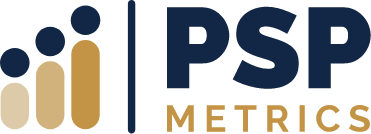Are You Growing Your Leaders?
Passionately advocating for leadership development comes from personal experiences and observations. Many leaders struggle to transition from individual contributor to leader, often because they lack proper preparation, knowledge, skills, tools, coaching, and support.
Deloitte’s 2015 Human Capital Trends Report surveyed 3,300 business and HR leaders from 106 countries, revealing that building leadership capabilities was the second most important issue. Although the study is somewhat dated, it’s reasonable to assume that the challenges of the pandemic, a recession, and the rise of remote and hybrid work have made building leadership capabilities even more critical today.

The report shows that while 78% of respondents consider building leadership capabilities important, only 42% feel somewhat ready to tackle the challenge, leaving 36% without adequate plans or tools. This gap can significantly impact safety, quality, productivity, and stakeholder and customer relationships.
Many doubt the usefulness of leadership development programs, but often they haven’t experienced the right ones. Effective programs are not a series of one-off events but a structured approach using diverse tools and techniques tailored to the organization’s culture.
If recognizing the need for a comprehensive leadership development program, consider the following:
- Needs Analysis: Start with a thorough analysis. Engage key stakeholders to assess leadership readiness, identifying gaps using a start, stop, continue approach. Encourage critical thinking about success and the knowledge, skills, and abilities needed. Tools like the PSP Metric’s Behavioral Metric Survey can provide valuable insights into specific development needs.
- Tools: Once gaps are identified, choose appropriate activities, such as:
- Instructor-led events (with pre and post activities)
- Third-party leadership training (e.g., Disney Institute)
- Job shadowing seasoned leaders
- Cross-functional project work as a project lead
- Action learning assignments to expand business knowledge
- Coaching and mentoring
- Informal self-paced learning (reading, research, etc.)
Combining these activities ensures participants gain a broad and deep understanding of leadership and the business.
- Support: Development should be ongoing and part of a continuous process. Key players must support this effort. Before any developmental activity, managers should discuss expectations with participants. Afterward, follow-up conversations should focus on learning outcomes and application. Managers must observe and coach to ensure new skills are implemented. Learning professionals, Talent Management professionals, and HR Business Partners also play crucial roles.
Effective leadership development is an organizational effort. Identify gaps, choose the right tools, and provide necessary support to create a program that eases the transition into leadership, enhances emerging leaders’ capabilities, and builds a strong leadership pipeline.
Contact us today to revolutionize your recruitment process!
Reach out to Jim Taylor to learn more.
Comments are closed.

